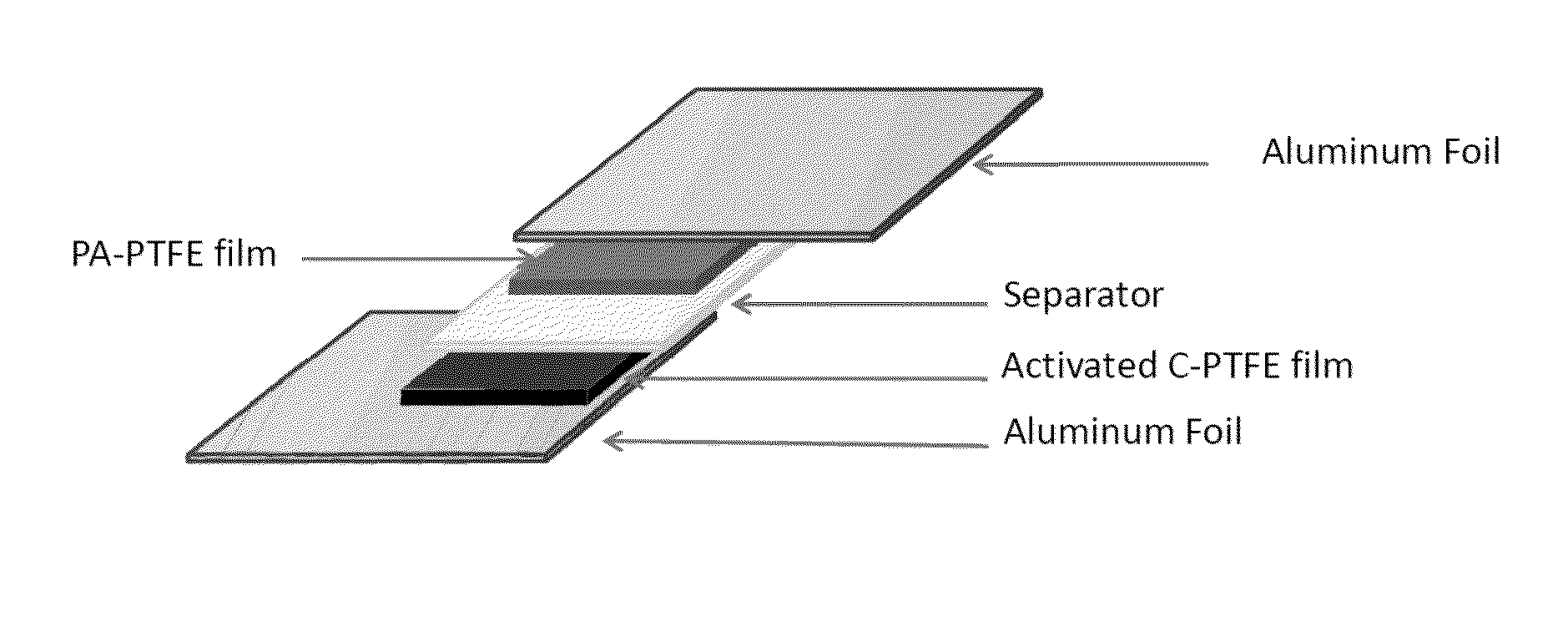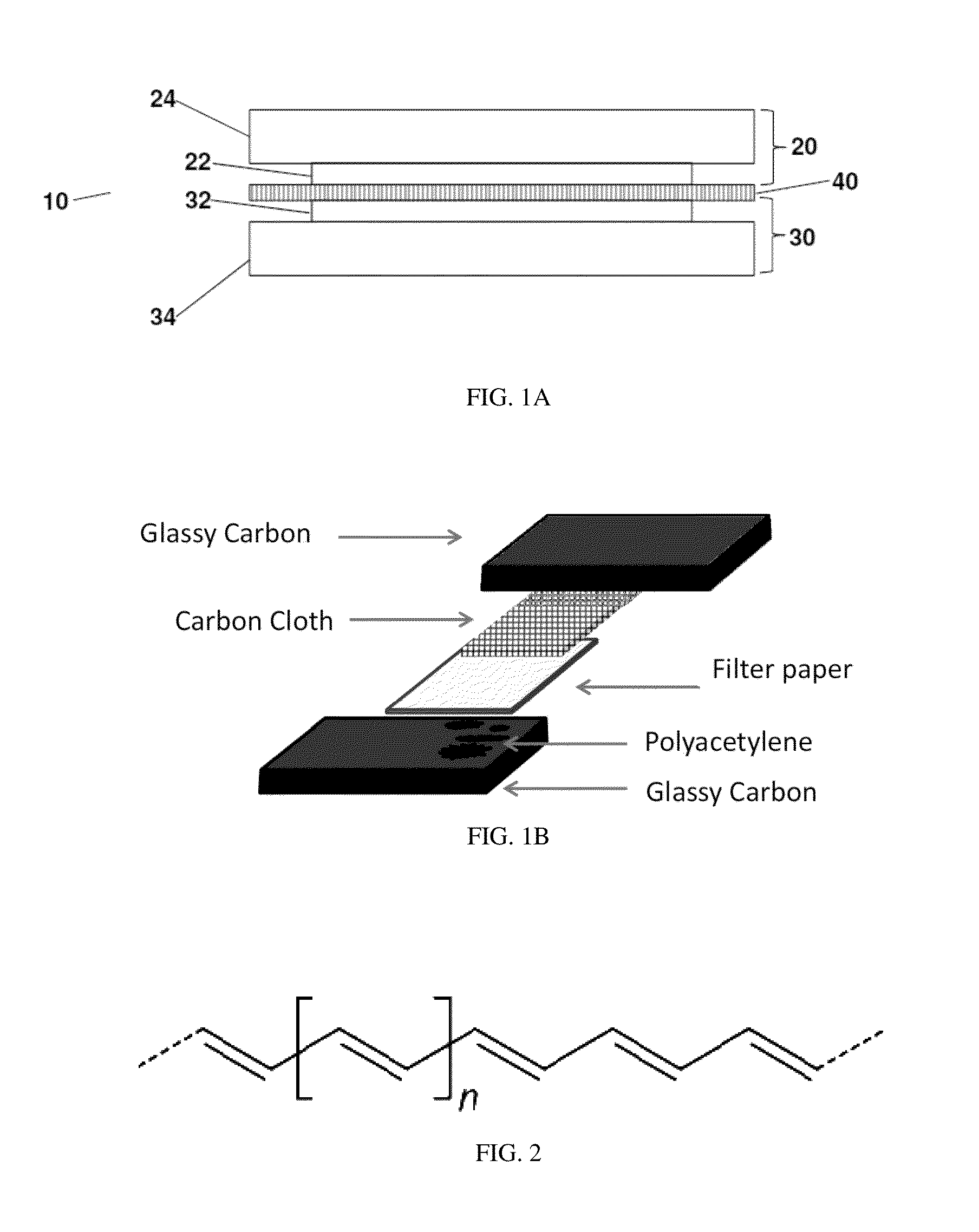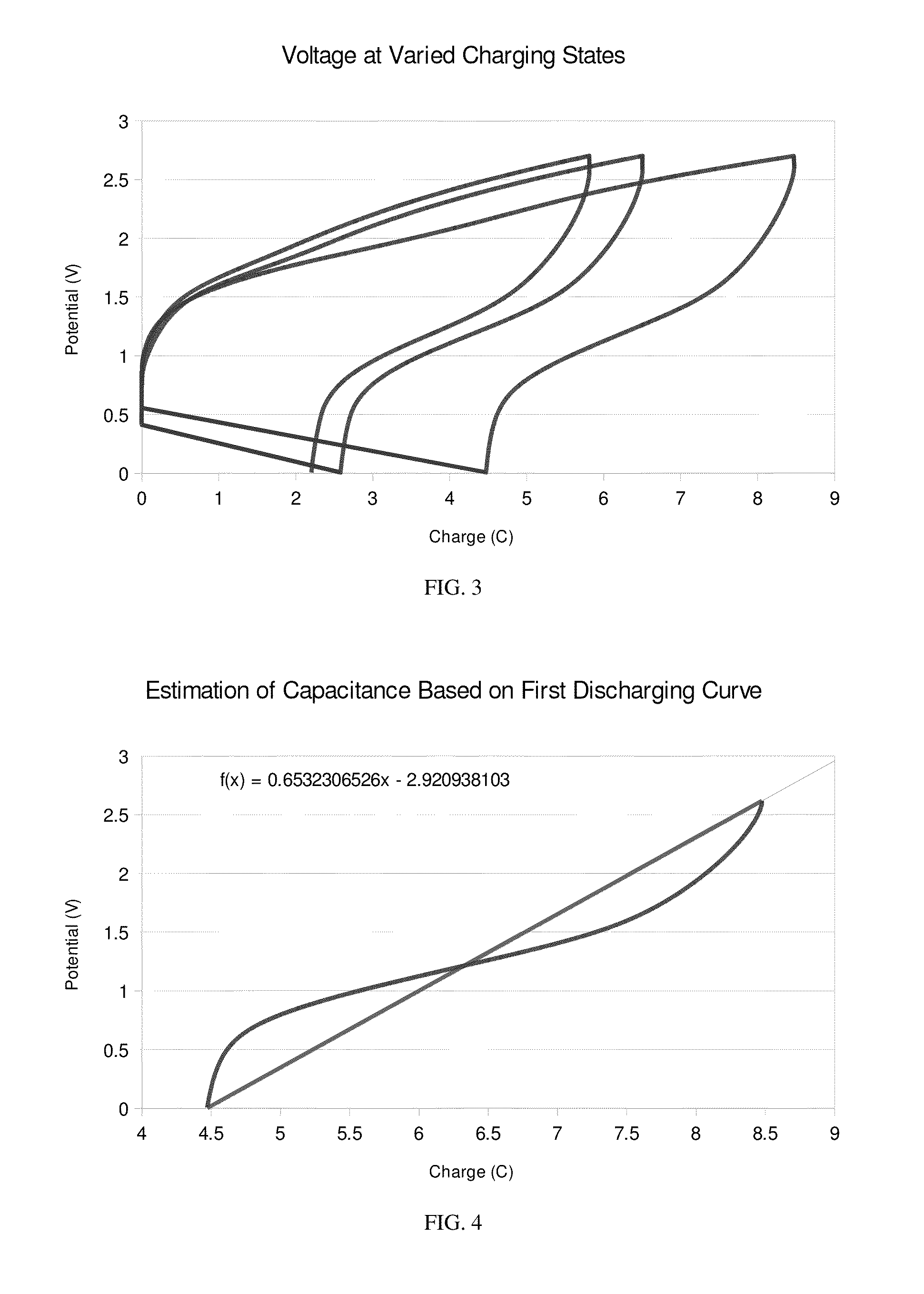Devices and methods including polyacetylenes
a technology of polyacetylene and polyacetylene, applied in the field of devices and methods including polyacetylene, can solve the problems of limited widespread use of polyacetylenes
- Summary
- Abstract
- Description
- Claims
- Application Information
AI Technical Summary
Benefits of technology
Problems solved by technology
Method used
Image
Examples
examples and embodiments
Example 1
[0081]The following example describes the preparation of a polyacetylene polymer. To a 100 mL Schlenk flask purged with dry nitrogen was added dry toluene (30 mL), followed by tetrabutoxytitanium (5.2 g, 15 mmol). Triethylaluminum solution in toluene (31 mL, 1.9 M, 60 mmoL) was slowly added, and the resulting mixture was stirred for 4 h at room temperature to form the catalyst solution, which was stored under nitrogen.
[0082]In a separate flask was added dry toluene (40 mL) and small amount of the catalyst solution (0.6 mL). Acetylene gas, which was purified by passing through a dry ice trap, was introduced via a syringe needle. The polymerization was allowed to continue for 16 h. The polymer was suspended in isopropanol, and the precipitates were collected by filtration, washed with isopropanol, and dried under vacuum to yield polyacetylene (3.4 g).
example 2
[0083]In the following example, a supercapacitor device was assembled according to FIG. 1B. The negative electrode was Spectracarb Activated Carbon Fabric Type 2225 from Engineered Fibers Technology, LLC. In a representative experiment, polyacetylene (5.9 mg) was ground into fine particles and evenly spread on the surface of half of the 2.5×2.5 cm2 glassy carbon, and the polyacetylene was then completely covered with a piece of filter paper (Whatman #6). On top of the filter paper was placed the carbon cloth cut into rectangular shape, just enough to cover the polyacetylene area (the weight of the carbon cloth was 50 mg). On top of the carbon cloth was placed another 2.5×2.5 cm2 glassy carbon square. The completed assembly was then clamped together with bind clips, and electrolyte (prepared by mixing tetraethyammonium hexafluorophosphate, propylene carbonate, and ethylene carbonate in a weight ratio of 2:1:1) was then added through the edge of the device.
example 3
[0084]The following example describes the performance of the supercapacitor device described in Example 2. The device was analyzed by charging at constant current (0.002 A) until the voltage reached 2.7 V, and then discharging at constant current (0.002 A) until the voltage reached 0. The device voltage was monitored continuously every microsecond during the charging discharging process. The charging / discharging process was repeated three times. FIG. 3 shows the voltage charging state relationship during the first three cycles. The capacitance of the device was estimated as 1.53 by calculating the reciprocal of the line passing the both ends of the curve. (FIG. 4) The specific capacitance based on polyacetylene was calculated to be 259 kF / kg. The specific energy based on polyacetylene was calculated by integrate the energy released during the first discharging (FIG. 5, the total energy released during the first discharging was 5.2 J) and dividing the total by the mass of the polyace...
PUM
| Property | Measurement | Unit |
|---|---|---|
| thickness | aaaaa | aaaaa |
| thickness | aaaaa | aaaaa |
| thickness | aaaaa | aaaaa |
Abstract
Description
Claims
Application Information
 Login to View More
Login to View More - R&D
- Intellectual Property
- Life Sciences
- Materials
- Tech Scout
- Unparalleled Data Quality
- Higher Quality Content
- 60% Fewer Hallucinations
Browse by: Latest US Patents, China's latest patents, Technical Efficacy Thesaurus, Application Domain, Technology Topic, Popular Technical Reports.
© 2025 PatSnap. All rights reserved.Legal|Privacy policy|Modern Slavery Act Transparency Statement|Sitemap|About US| Contact US: help@patsnap.com



